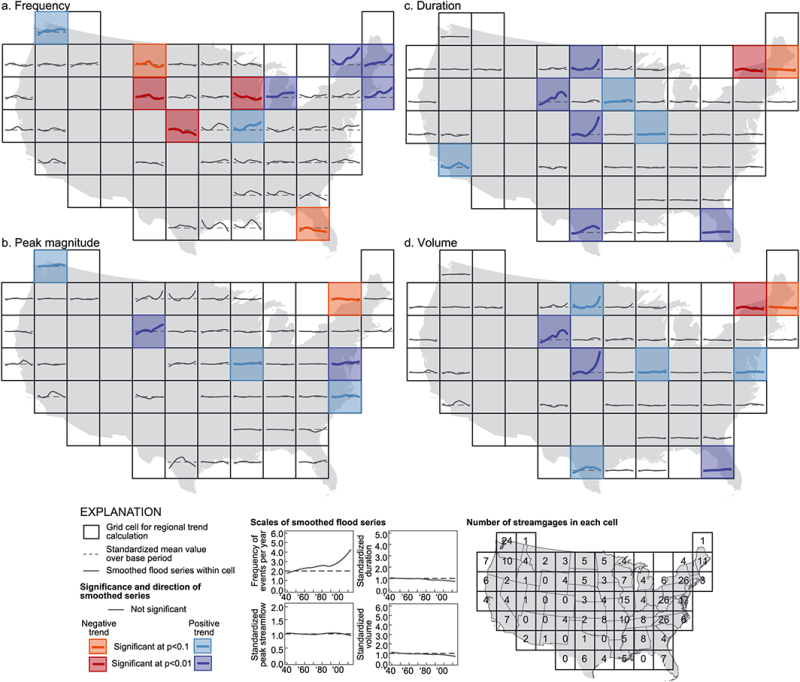I have come across four scientific papers published recently, all of which support the climate realist perspective, and thought them of such significance that I should share them here, in my climate realist paper update series of blog posts.
First is Fragmented patterns of flood change across the United States (press release here), published in Geophysical Research Letters. It argues that much of the United States has experienced no change in floods, and that no countrywide trend is observable. This is great news, since according to the paper, a climate change influence in flooding in the United States as a whole, at least currently, is not apparent. This flies in the face of many alarmist statements, such as that the effects of climate change on floods in the United States are already observable. However, this paper’s results are corroborated by multiple independent studies finding little variation of late in the hydrological cycle, despite the ongoing, partially human-induced global warming.

Changes in flood patterns across the United States over the past 75 years. Note the lack of cohesive, country-wide change, at least in one direction. From Archfield et al. 2016.
Second is Modification of land-atmosphere interactions by CO2 effects: implications for summer dryness and heatwave amplitude, published in Geophysical Research Letters. It argues, similarly to another recent paper, that beneficial effects of rising CO2 on plants, such as increased leaf area and water use efficiency, will help mitigate projected increases in heat wave and drought impacts. This is also great news, and further lends credence to the idea that the beneficial effects of rising CO2 will at least partially offset some of the negative effects.
Third is Assessing recent trends in high-latitude Southern Hemisphere surface climate (press release here), published in Nature Climate Change. It argues that recent trends in high-latitude Southern Hemisphere climate, such as sea-ice extent, temperature, and sea level pressure, (with the exception of the Southern Annular Mode) are within the bounds of the past 200 years and can be explained by natural variability. This result is especially fascinating, since humans have spewed so much CO2 and other GHGs into the atmosphere and yet natural variability can still overwhelm that signal. This thus implies that climate sensitivity may be on the low end of the IPCC’s range: 1.5 to 4.5 degrees Celsius for a doubling of CO2 in the atmosphere.
Fourth is Decrease in climatic conditions favouring floods in the south-east of Belgium over 1959–2010 using the regional climate model MAR, published in International Journal of Climatology. It argues that warming in Belgium actually decreased the chances for conditions favorable for floods to develop. This result is also fascinating, and again contradicts the simplistic view that climate change will simply make virtually climatic extremes worse everywhere.
As I noted before, evidence accumulates seemingly every passing week supporting the climate realist perspective. One can only hope that such papers will get more recognition than they currently do.
2 thoughts on “A highlight of recent research supporting the climate realist perspective #8”